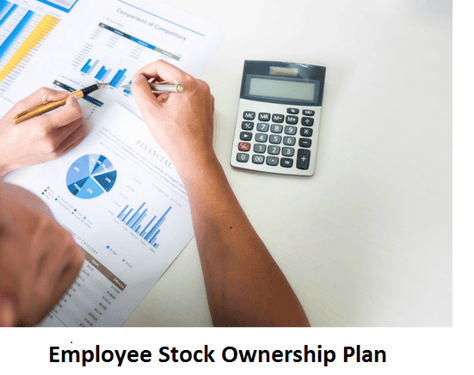Employee stock ownership plans (ESOPs) are a unique type of profit-sharing plan, in that they also serve as a qualified retirement program. ESOPs are a way to incentivize employee performance by allowing staff members to invest in their respective companies.
This investment is often linked to an increase in performance as employees profit more when the company’s stock value rises. The increase in profits can cause employees to continue working hard to reach any financial or performance objectives put forth by their company. This profit-sharing plan also helps align shareholder interest with employee outlook, as employees serve as shareholders.
 ESOPs can also be used to supplement an employee benefit plan and as a way for companies to take advantage of the incentives associated with borrowing money to purchase new assets with pre-tax money. They can also be used as succession planning because they allow companies to allocate shares of their business gradually. If you are interested in incorporating ESOPs into your employee benefits package for any of the reasons mentioned, read on to learn more about them and how you can move forward with planning and implementation.
ESOPs can also be used to supplement an employee benefit plan and as a way for companies to take advantage of the incentives associated with borrowing money to purchase new assets with pre-tax money. They can also be used as succession planning because they allow companies to allocate shares of their business gradually. If you are interested in incorporating ESOPs into your employee benefits package for any of the reasons mentioned, read on to learn more about them and how you can move forward with planning and implementation.
Understanding ESOPs
ESOPS are retirement plans where a company contributes its stock or money to buy its stock to a trust. Shares of stock are then allocated to each eligible employee’s account. These shares are allocated based on relative pay or a set formula the company has chosen and identified in their plan document. Typically, under an ESOP, as employees gain seniority at their respective companies, they become more vested in their shareholdings until they become 100% vested. This process typically takes anywhere from three to six years. When an employee is eligible to receive distributions (i.e., they are deceased, have retired, were terminated, or are now disabled), the company buys back the shares of stock, and the amount from that sale is distributed into the employee’s account.
ESOPs: Advantages and Disadvantages
ESOPs have many advantages and disadvantages associated with their implementation. Some benefits include the fact that cash contributions made to the ESOP are tax-deductible for the employer. Also, any contributions used to pay back a loan that the ESOP has taken out to purchase shares of the company are tax-deductible. There’s also the employee performance component, where employees are more interested in the overall performance of the company because they have a stake in said company.
Unfortunately, ESOPs cannot be used in partnerships and at many professional corporations. Also, private companies that have ESOPs have to buy back shares from employees who are departing, which can potentially be a series of significant expenses. Finally, as more shares are issued to employees, company stock can become diluted and, therefore, decrease in value.
Plan Creation and Implementation
If you are interested in establishing an ESOP and offering this benefit to your team, review the list of steps below to figure out how to create and implement this profit-sharing plan.
- Establish a trust. You must set up a trust so that you can buy your company’s stock. You can contribute your stock, cash to buy shares of your stock, or both your stock and purchasing funds to your trust.
- Allocate shares. After you buy shares of stock through your company’s ESOP, you can then allocate them to individual employee accounts based on a formula and criteria you have settled on (e.g., seniority or employee salary amount). As time goes on, employees become vested in more shares in their accounts.
- Distribute funds appropriately. When an employee leaves your company, you can offer to buy back the shares distributed to them. Most companies buy back shares on credit, in which case the ESOP borrows money based on the company’s credit to make the purchase. Once you have the funds in place, you can pay out the employee accordingly.
Unlike some other profit-sharing plans, ESOPs are not the best way for a company to turn a greater profit because you will most likely not make as much money in stock sold to an ESOP in comparison to taking your company public. However, ESOPs are an excellent way to get your employees to invest in your company literally and figuratively. If ensuring that your employees are performing to the best of their ability is your top priority, establishing an ESOP can be an excellent option for your business.
Esops and variable pay are just one of our areas of expertise as Virtual CFOs. To learn more, reach out to schedule a free virtual CFO consultation today.
.png?width=120&height=77&name=Summit-Virtual-CFO_color_rgb%20(1).png)













